The Tallulah Falls Railway
Introduction
Text-to-speech Audio
Images
Map of Tallulah Falls Railway
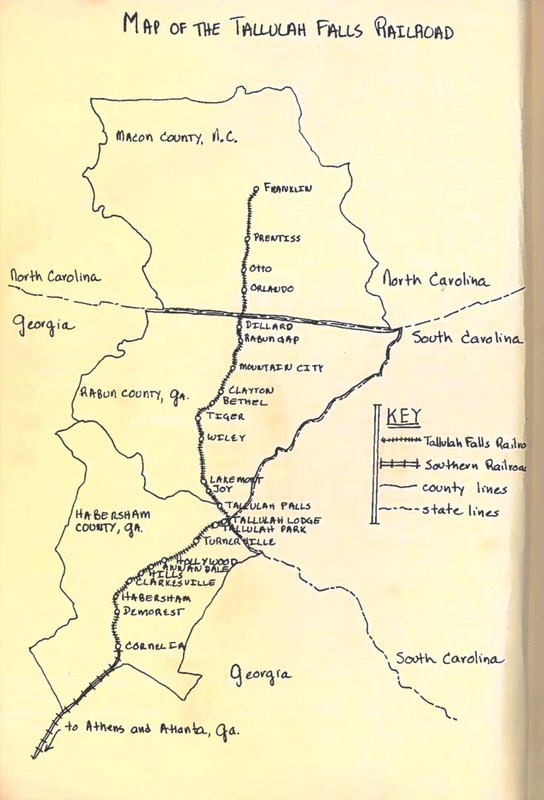
Tallulah Falls Railroad Time Table
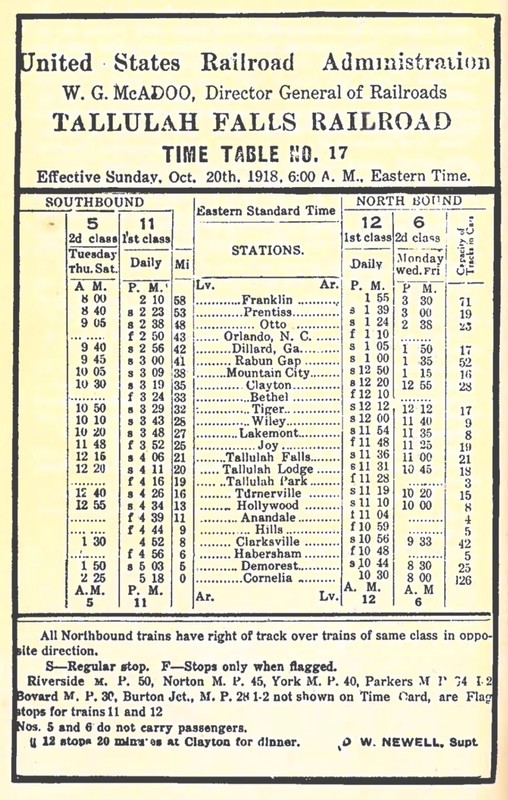
Passenger Train
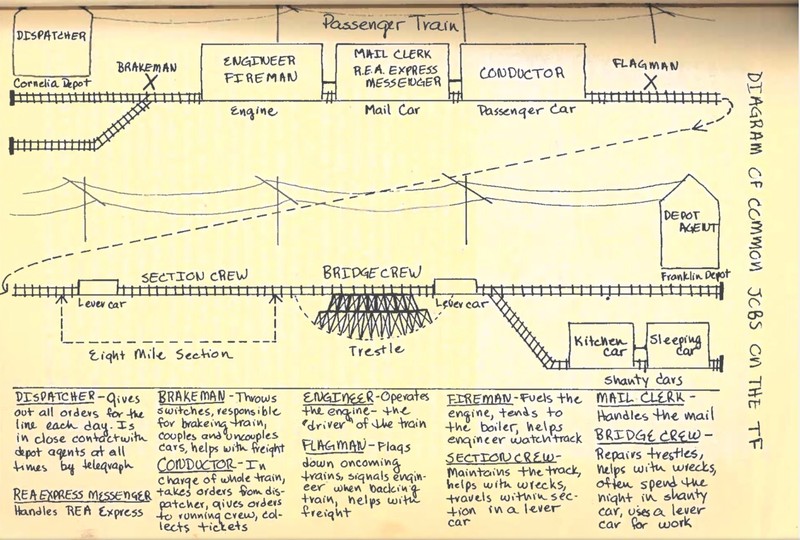
Picture of Tallulah falls Railroad
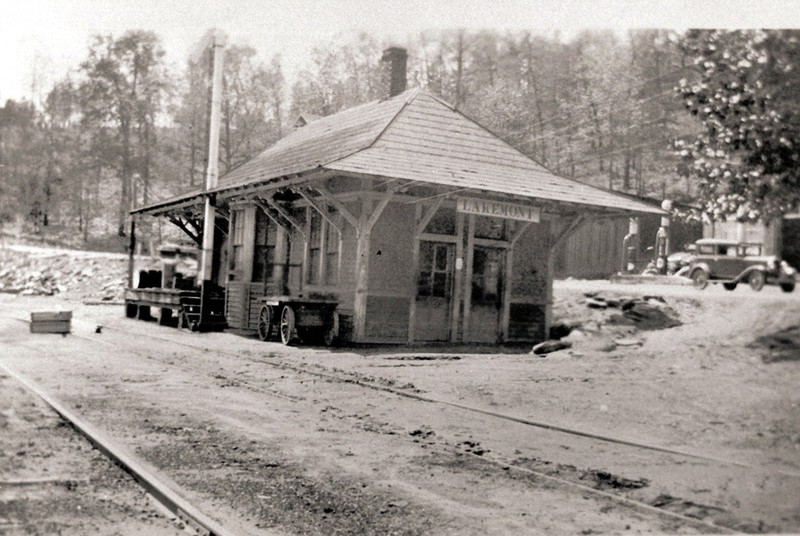
Old tracks at the southern terminus at Cornelia
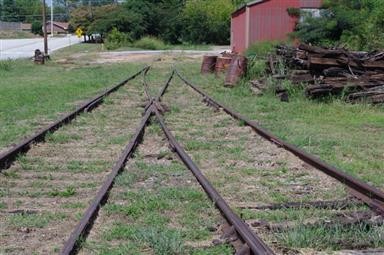
The concrete piers in Tallulah Lake
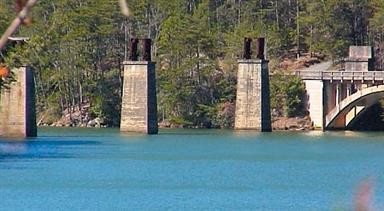
Backstory and Context
Text-to-speech Audio
In January 1854, a legislative act was passed to start the construction of a railway to link Athens and Clayton together. Originally the railway was the North Eastern Railway, but the American Civil War delayed the construction. Within that time, the line was chartered from Athens and Lula, totaling around thirty-nine miles. In 1881 it was sold to the Richmond and Danville Railroad. R&D started an extension from Clayton to Cornelia. By 1882, the railway reached Tallulah Falls. There was a plan to have the train move through Rabun Gap, Knoxville, and Tennessee, but these section plans were never acted on. In 1897 the Blue Ridge and Atlantic Railroad, which had only started being chartered in 1887, was sold at foreclosure.
In late March of 1898, the Tallulah Falls Railway Company moved to buy the BR&A and extend it to Franklin. The railway wasn't doing too well money-wise, but it did find financial backing with the Southern Railway. The line was extended to Clayton GA in 1904, to North Carolina in 1906, and then to Franklin in 1907. The result was a 58-mile line from Cornelia, GA to Franklin, NC. In 1908, it went into receivership for a year. Then in 1923, it went into receivership for its remaining years. There were a few years it made money but it was so deep in debt that it never showed any real profit.
In 1955, Walt Disney chose the railway for photography in The Great Locomotive Chase as the location resembled the actual chase that took place around 100 years earlier. In the town of Kennesaw, Georgia. “Disney was quite fond of the railway and expressed interest in purchasing it for use as an excursion line.” Disney grew fond of the Tallulah falls railroad, they expressed their interest in buying it to use as an excursion line. Unfortunately, the path of our old railway veers as the Southern Railway management refused to sell it. On March 10, 1961, the railway was ordered to be sold for scrap.
Even though the railway was semi-short-lived, it still played a part in Industrialization. Trains were a new way of getting around and played a pretty big role in Industrialization. It helped advance transportation to a new level and opened up a lot of towns to the outside world around them. Trains and Industrialization also helped with trading goods to places that didn’t have the materials. It connected people to places they had never been able to reach before. For example, Franklin was more isolated and did not get many visitors, therefore forced to do everything on their own. Then after the train had been built, many passengers used it to visit their relatives or to go to neighboring towns to shop.
During construction of the railway, the Cherokee told a tale of “little people” who could try and trick the workers into falling to their death at the bottom of the gorge. The Cherokee people had to be wary when speaking of the little people, because it is bad luck to talk about them in the summer. To avoid this they had to start calling the little people by different names.
Sources
Tallulah Falls Railway, Accessed May 24th 2021. https://en.wikipedia.org/wiki/Tallulah_Falls_Railway.
Bailey, Mitch. The Tallulah Falls Railroad. Accessed May 24th 2021. https://www.abandonedrails.com/tallulah-falls-railroad.
Tallulah Gorge. Accessed May 24th 2021. https://en.wikipedia.org/wiki/Tallulah_Gorge.
Farris, David . The Cherokee Legend of the Little People, Edmond Life & Leisure. January 29th 2015. Accessed May 24th 2021. http://edmondlifeandleisure.com/the-cherokee-legend-of-the-little-people-p10901-76.htm.
Little people (mythology). Accessed May 24th 2021. https://en.wikipedia.org/wiki/Little_people_(mythology).
Tallulah Falls Railroad: Opening Rabun County to the Outside World, Raban County Historical Society . Accessed May 24th 2021. https://www.rabunhistory.org/museum-exhibits/tallulah-falls-railroad/.
The Tallulah Falls Railway 1898-1961, The Tallulah Falls Railway Museum. Accessed May 24th 2021. https://tallulahfallsrailway.wixsite.com/tallulah-falls-rr/boarding-options.
Tallulah Falls Railroad Museum, Explore Rabun. Accessed May 24th 2021. https://explorerabun.com/blog/tallulah-falls-railroad-museum/.
Carver, Kaye. Queen, Myra. Memories of a Mountain Shortline: The story of the Tallulah Falls Railroad. Foxfire Press, 1976.
The Great Locomotive Chase. Lyon, Francis D.. United States. 1956.
Memories of a Mountain Shortline: The story of the Tallulah Falls Railroad By Kaye Carver and Myra Queen
Memories of a Mountain Shortline: The story of the Tallulah Falls Railroad By Kaye Carver and Myra Queen
Memories of a Mountain Shortline: The story of the Tallulah Falls Railroad By Kaye Carver and Myra Queen
https://www.rabunhistory.org/museum-exhibits/tallulah-falls-railroad/
https://www.abandonedrails.com/tallulah-falls-railroad
https://www.abandonedrails.com/tallulah-falls-railroad
